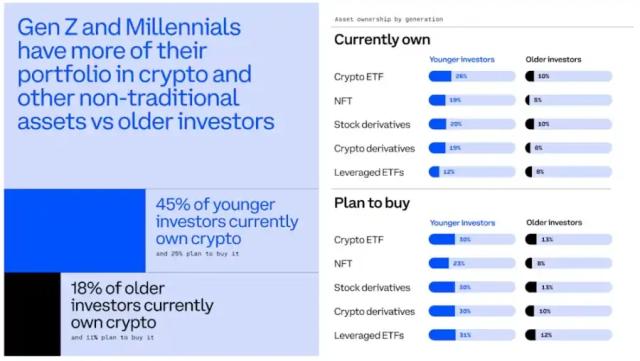Key Points:
- The minutes of the Federal Reserve's January meeting show that Fed officials reached a consensus in the January meeting that they need to see further declines in inflation before making additional interest rate cuts.
- Participants pointed out that there are upside risks to the inflation outlook, particularly the potential impact of changes in trade and immigration policies.
- The minutes also mentioned a fairly optimistic sentiment about the economic outlook, partly due to market expectations of easing regulations or changes in tax policies.
- Officials also discussed whether to slow or pause the reduction of their nearly $6.8 trillion asset portfolio, as they face complex issues related to raising the federal debt ceiling in the coming months.
The Fed meeting minutes indicate that the central bank hopes to maintain a restrictive policy when the economy is strong, and wants to see further progress on inflation before adjusting interest rates. Overall, the minutes did not change market expectations for the Fed's policy direction.
The minutes of the Federal Reserve's January meeting show that Fed officials reached a consensus that they need to see further declines in inflation before making additional interest rate cuts, and expressed concerns about the potential impact of President Trump's tariff policies on inflation.
Participants: Wait for Inflation Improvement Before Rate Cuts
At the January meeting, the Federal Open Market Committee (FOMC) unanimously decided to keep the key policy rate unchanged. The minutes show that in making this decision, the participants discussed the potential impact of the new Trump administration, including discussions about tariffs and the potential impact of reduced regulation and taxes. The committee noted that compared to the policy environment before the rate cuts, the current monetary policy is "noticeably less restrictive," which gives members time to assess the economic situation before taking further action.
Participants said the current policy provides "time to assess the outlook for economic activity, the labor market, and inflation," and the vast majority of members believe the Fed's current policy stance remains somewhat restrictive. The minutes state:
"Participants noted that, as long as the economy remained near maximum employment, they wanted to see further progress in reducing inflation before making additional adjustments to the target range for the federal funds rate."
"Many participants indicated that, if the economy remained strong and inflation continued to run high, the committee could maintain the policy rate at a restrictive level."
Officials expressed concern that changes in fiscal policy could lead to inflation remaining above the Fed's target.
Fed: Trump Policies Pose Upside Risks to Inflation
Currently, President Trump has implemented some tariff policies, but in recent days he has threatened to further expand the scope of tariffs.
In a conversation with reporters on Tuesday, Trump said he is considering imposing a 25% tariff on the automotive, pharmaceutical and semiconductor industries, and will accelerate the implementation over the course of this year. Although he did not provide details, these tariff measures will take trade policy to a new stage and, with inflation currently easing but still above the Fed's 2% target, further push up price levels.
The minutes show that FOMC members mentioned:
"the potential effects of changes in trade and immigration policies, as well as strong consumer demand. Business contacts in multiple regions reported that firms would attempt to pass along to consumers the higher input costs resulting from potential tariffs."
They further noted:
"Risks to the inflation outlook were seen as tilted to the upside, particularly in light of participants' comments about the potential effects of changes in trade and immigration policies."
Since the January meeting, most Fed officials have remained cautious in discussing the policy direction. Most believe the current interest rate level allows them ample time to assess how to proceed with policy adjustments.
In addition to the Fed's usual focus on employment and inflation, Trump's fiscal and trade policy plans have added complexity to the decision-making process.
In addition to concerns about tariffs and inflation, the minutes also mentioned "a fairly optimistic sentiment about the economic outlook, partly due to market expectations of easing regulations or changes in tax policies."
Many economists believe that the tariffs planned by Trump will exacerbate inflation, although Fed policymakers have stated that their policy response will depend on whether these tariffs only lead to a one-time price increase or trigger deeper inflationary pressures that require a policy response.
Recent inflation indicators have been mixed, with the January Consumer Price Index (CPI) rising more than expected, while the Producer Price Index (PPI) showed some easing of price pressures in the supply chain.
Fed Chair Powell has generally avoided speculating on the potential impact of tariffs. However, other officials have expressed concerns and acknowledged that Trump's measures could affect monetary policy and potentially further delay rate cuts.
Currently, the Fed's benchmark overnight lending rate target range is 4.25%-4.5%. According to futures market pricing, investors currently expect one rate cut in 2025, and possibly a second cut, with the next cut potentially occurring in July or September.
New Fed Watcher: May Slow or Pause Balance Sheet Reduction
A Wall Street Journal article by a "new Fed watcher," reporter Nick Timiraos, states that the Fed's January meeting minutes show that officials discussed whether to slow or pause their nearly $6.8 trillion asset portfolio reduction, as they face complex issues related to raising the federal debt ceiling in the coming months.
Timiraos points out that market dynamics related to the debt ceiling could lead to significant fluctuations in the Fed's reserve balances on the liability side. Since mid-2022, the Fed has been reducing its balance sheet to reverse the loose monetary policy QE during the COVID-19 pandemic. However, the balance sheet reduction process will ultimately deplete the banking system's reserve balances, and Fed officials are currently unsure how long this process will take.
He notes that how the Treasury Department manages its cash balances could complicate the Fed's ability to determine the appropriate level of reserves.
Therefore, according to the minutes, officials at the January meeting felt that "considering a pause or slowing of the balance sheet reduction until the debt ceiling issue is resolved may be appropriate."








